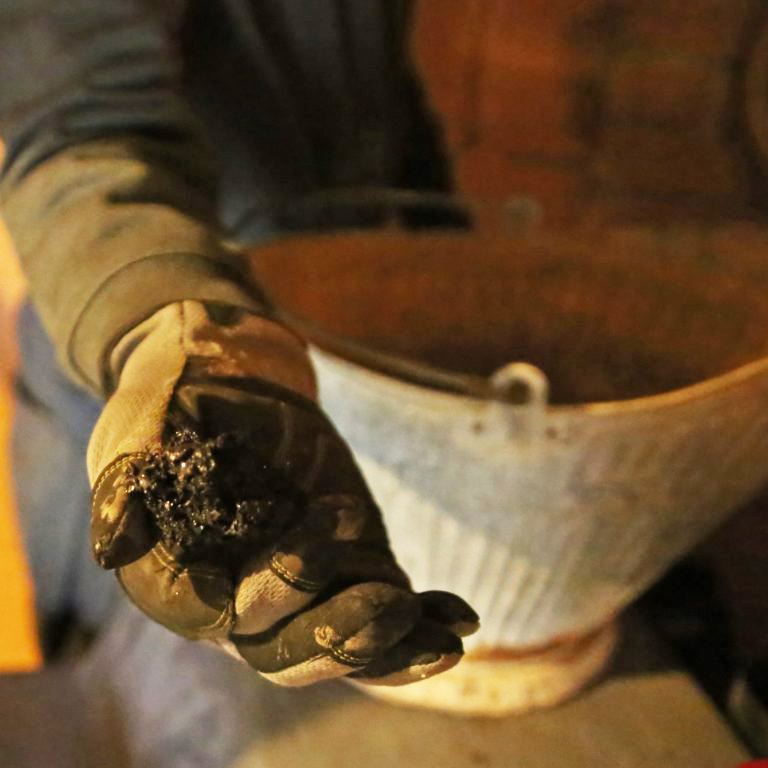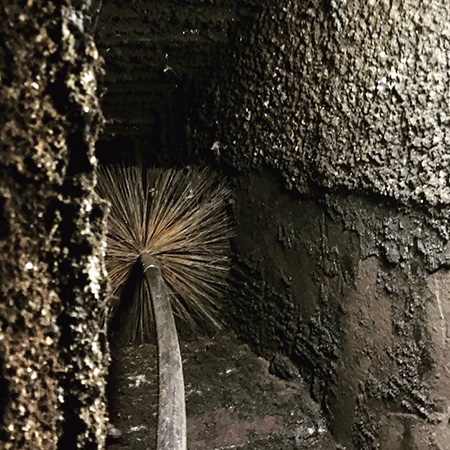- PENSACOLA SHOWROOM: 7555 Highway 98 West, Suite A, Pensacola, FL 32506
- DESTIN SHOWROOM: 36054 Emerald Coast Pkwy #100, Destin, FL 32541
Although we don’t use the fireplace as often here in Pensacola and Northwest Florida as our northern or Alabama neighbors, annual chimney inspections and regular chimney cleaning are still necessary to ensure your chimney and fireplace are safe to operate. Here’s why you should still be worried about creosote buildup in your chimney.
 What is Creosote?
What is Creosote?Creosote is one of several naturally occurring compounds produced when combusting wood. During the chemical reaction of the combustion process, it distills the tar in the wood creating creosote. Some creosote residues stick to the flue, flue liner, smoke shelf, and other interior components as it rises out the chimney with the smoke and other toxic chemicals. Gas fireplaces also produce creosote, but to a much lesser extent than burning wood.
In its beginning stages, creosote is a benign powdery substance easily removable with regular chimney sweeping. The main problem with creosote is that it is tough to spot if you’re not looking for it, such as during an annual chimney inspection. Without regular chimney cleaning, creosote will continue to buildup in the chimney. It will eventually harden into a dark, tarry, charcoal-like substance that is highly flammable and extremely difficult to remove. Also, with the colder outside air, most creosote settles near the cap, which is very close to your roof. If the creosote is not removed, the intense heat or a hot ember can ignite it that can erupt into a chimney fire that can quickly spread to your roof and throughout your home.
Winter is a hectic time for firefighters in Escambia County, Florida, and around the country. Every year, there are more than 20,000 residential chimney fires. Failu re to adequately clean the chimney was cited as the primary cause, according to National Fire Protection Association (NFPA) statistics. Local fire officials recommend homeowners in the Florida Panhandle have a certified chimney professional inspect the flue to ensure it is safe before using your fireplace this winter.
Unlike a fine wine that gets better with age, creosote becomes more dangerous the longer it remains in the chimney. Here are the three stages of creosote.
 Minimizing Creosote Buildup
Minimizing Creosote BuildupWhile you can’t entirely prevent creosote buildup in the chimney, there are several things Fort Walton Beach and Northwest Florida residents can do to minimize its buildup.
Before lighting your fireplace for the cold winter season, make sure to have your chimney inspected and cleaned by a certified chimney professional. Schedule an appointjment online HERE.
Call Doodlebuggers at:
Pensacola, FL 850-477-1151
Destin, FL 850-243-0154